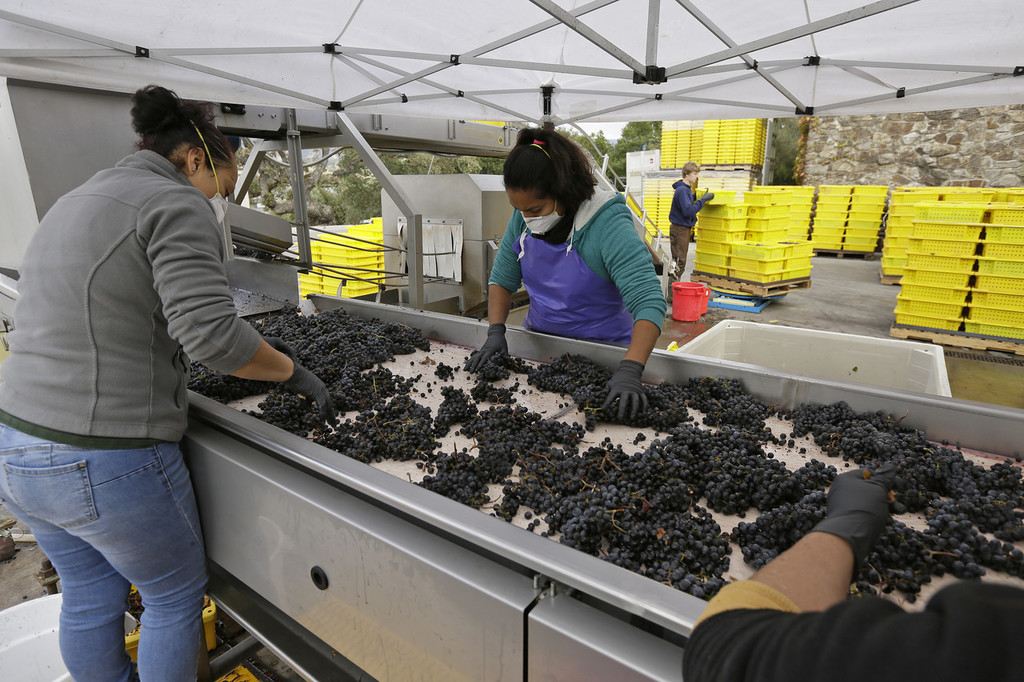Tariffs drying up US wine exports


California vineyards have been on 'roller coaster ride' amid US-China trade dispute
During his trip to China early last month, Michael Parr, a California vintner, had intended to sit down with importers and celebrate the end of tariffs. But soon he found out that the trade negotiations between the United States and China didn't work out and they were facing additional tariffs.
"It's been a roller-coaster ride. We are getting dizzy and it's time to get off the roller coaster," Parr, vice-president of international sales at Wente Vineyards in Livermore, California, told China Daily.
The country's oldest continuously operating family-owned winery has been exporting to China for 25 years. Now it has pushed the pause button on China, the sixth-largest importer of US wines, with more than 90 percent produced in California.
"It doesn't make sense for us branded wineries to spin our wheels and promote our brands when there's no inventory of wines in China," said Parr.
China is forecast to be second only to the US in the total value of wine sales. Although exports to China represent only 4 percent of the all US wine exports, the Chinese market has grown more than 450 percent in the last decade, according to Wine Institute statistics.
However, that trend reversed as tariffs were imposed. US wine exports to China were down 25 percent last year, according to the Wine Institute.
On June 1, China added another 15 percent tariff on wine imports from the US. That tariff is on top of a previous 15 percent tariff imposed in April 2018 and a 10 percent increase in September 2018. When compounded, the tariff rate is 93 percent, according to the Wine Institute of California.
"With tariffs so high, there's no way we can continue to ship wines and try to maintain a competitive price in China. We have crossed the threshold of being unacceptable in China," said Parr.
For Wente Vineyards, China has been one of the top 10 markets over the past several years, representing 5 percent of the company's exports. Parr said each of the three tariffs has had tremendous impact on the company's business in different ways.
In the few months following the first tariff, Wente didn't ship any wines to China because the huge amount of uncertainty in the market left Chinese importers reluctant to take the chance, said Parr.
"We kept thinking that the new negotiations were going to fix it and the tariff was going to disappear," he said. "And then all of a sudden, a few months later, 10 percent was imposed."
By then, Wente's inventories in China became "dangerously low", so the winery and its importers" came to the table and realized that if we want to maintain presence in the market, we need to start shipping some wine," said Parr.
The result is both parties giving up some margins so that the importers could fill shelves without raising the price too much.
"So after September, we made some small shipments in brand survival mode just to keep the pipeline from drying up completely," he said. "The third tariff is a point of no return because there is no way that our importers and Wente could discount enough to keep the price in China at the same level."
Just before the first retaliatory tariff was implemented last year, Klinker Brick Winery in Lodi, California, shipped its first order of about 1,000 cases of wine to China, which the company expected to become its biggest export market. After that, there was no new order from China due to the increased tariffs.
The loss of revenues is just the short-term impact of the tariffs, said Parr, who is more concerned about the long-term impact: loss of opportunities.
"If we are not shipping our California wines, Chinese consumers will continue to drink. They are going to drink wines from other countries. So all the other wine producing countries are getting a leg up and California wineries are sitting on the sidelines watching our competitors take over the field," he said.




































